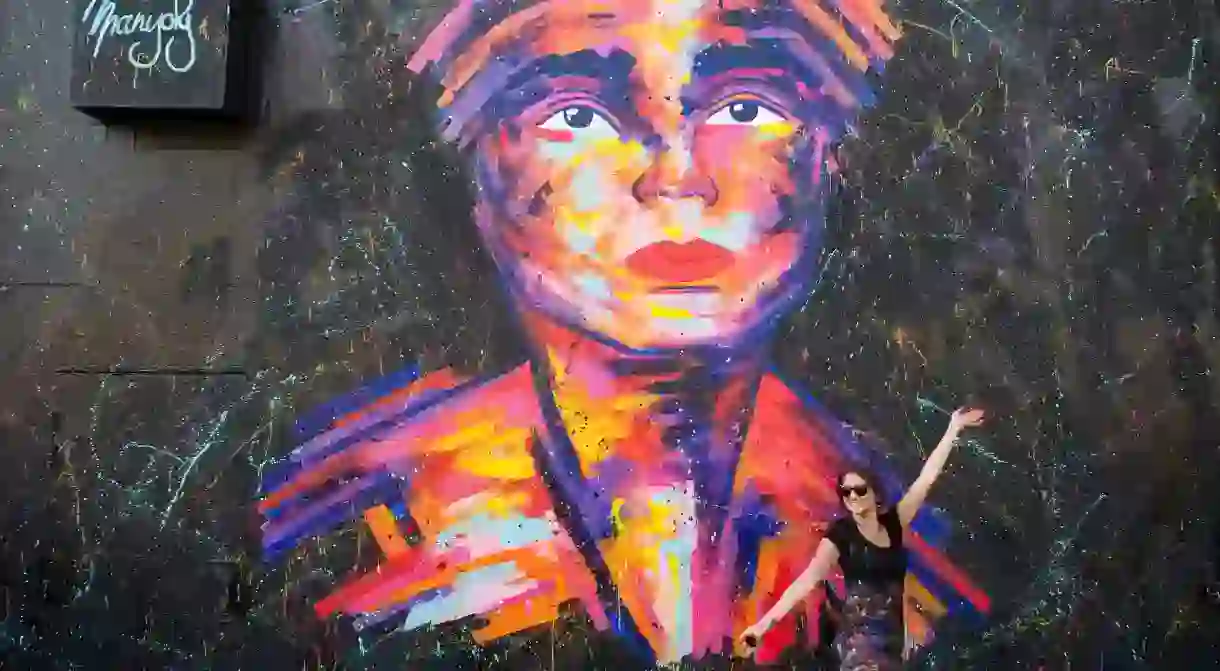Meet the Many Faces of French Street Artist Manyoly

French artist Manyoly is making a name for herself on the streets of Europe, creating street art that is both ephemeral and lasting. Here, she answers a few questions about her work and where she finds inspiration.
How did you become an artist? And why specifically a street artist?
I grew up with an artist at home, my mum, so I guess I have it in my blood. Street art came later. Four years ago when I moved to Marseille, I started to paint things in the streets, because Marseille has tags and graffiti everywhere, so it’s easy to just add to it.

What kinds of things do you paint? And why?
I mostly paint very colourful portraits of women. I have been passionate about showing women in art for a long time and I have always portrayed them in different ways; for the past four or five years, it’s been through painting.

Is there anything that you would never paint on?
Everything has the potential to be a good material with a little bit of preparation and imagination, except of course something that is too dusty or sandy, because you just can’t work on it.

How long do you expect your work to last?
The longer it stays, the better it is, but that’s not always how it works and that’s okay. Life in the street is ephemeral.
What does being a street artist represent to you? How is it different to other art mediums?
I paint on canvas as well as on the street. I love doing both because they are so different while also complementing each other. Most of the time I don’t have the right to paint on the street, so I have to do it fast! That’s why I don’t put in a lot of detail. On a canvas, it’s the opposite; I can take a lot of time so I add more detail.

Do you ever get permission to paint in the street? What problems do you encounter that other artists don’t?
Like I said, most of the time I don’t have permission, so that’s why I do a lot of collage. I paint on paper and I paste it on the street. With this technique, I can’t be arrested (with painting I could, and I’m not keen to have that experience!). But when I do have permission, I paint directly on the wall.
How does being a street artist affect the commercial side of your work when you can’t sell it?
A lot of people are passionate about street art, you can find them in every city. I call them ‘hunters’; it’s a big community. And of course, they share on social media the art they find. So your wall can cross the world easily like that. This is the superpower of street art. People then search for your name and ask to see more of your ‘available’ work.

Where in the world is the best place right now to be a street artist?
It could be anywhere with empty walls and nice weather!
Where can we find your work in France and around Europe?
My work is in Marseille, Paris, Vitry, Lille, Montpellier, London, Berlin, Murcia (Spain), Barcelona, Lisbon, Ghent (Belgium) and Antwerp.
Check out Manyoly’s website to find out more.













